-
Earth Science Journal!
#17 My Psi Wheel
This is a test of your mental prowess!How much mindpower do you have?Please be very careful while doing this activity. The wheel could be smaller, but it will take more mental power!What you needAn open mindA small square piece of paper (2-3 inch sides)A pin or needle on a small baseMental focus!
The wheel could be smaller, but it will take more mental power!What you needAn open mindA small square piece of paper (2-3 inch sides)A pin or needle on a small baseMental focus!
Very few people can do what you are about to see._If you are really powerful, you can turn it the other way!Before you test your ability, predict what you think will happen.My prediction: I think.... because...
Now it is your "turn".We are going to start this experiment at the same time.Before we begin, let's focus on our thoughts and energy.
Answer in your journals.-
Can you figure out why the psi wheel really spins?
Do you think it was really psychic powers? - What did your teacher say that led you to think it was telekinesis?
__It was powered by you!
Your energy was transferred throughCONVECTION3. Why did the Psi wheel turn? The heat from your handsYour energy was transferred through
CONVECTION CURRENTS1. Heat from your hands energizes the air molecules between your hands.
2. This makes the air molecules move faster.
3. The faster-moving molecules collide with each other with more force.
4. Harder collisions make the molecules move further apart.
5. Molecules further apart are less dense and rise (they weigh less per unit volume).
6. When they lose their energy, they get more compact (more dense), and gravity pulls them down (more dense air weighs more).
7. The more dense material forces the less dense material to rise.
4. What causes convection currents?
Convection is the transfer of heat energy in a fluid (gas or liquid) by creating density currents. Warmer fluids rise, and cooler fluids sink.
Convection currents are Density Currents, and Gravity forces them to move.
5. Draw this in your journal. Which way will the water flow in the box below?
Draw arrows showing the convection.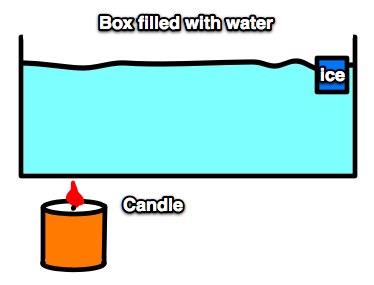 Were you correct?
Were you correct?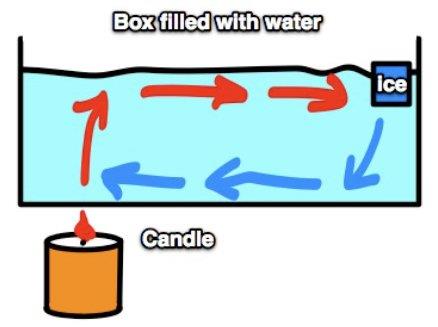
What about air?
6. Draw this in your journal and draw one arrow in each tube and one in the box.
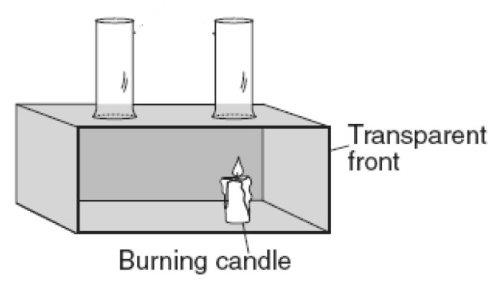 Were you correct?
Were you correct?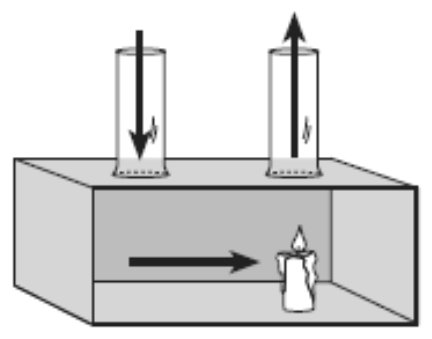
7. What will happen to a sealed water balloon's weight when heated in the microwave?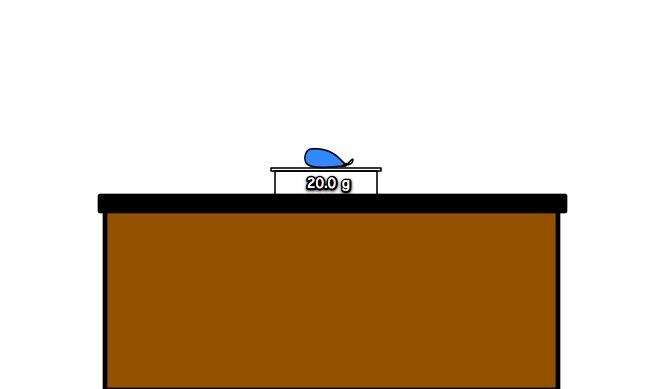
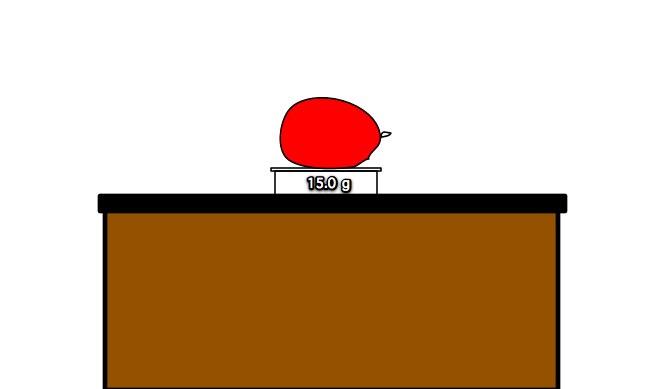
The bigger balloon weighed less!
Why does the balloon weigh less?8. What happened to the mass inside the balloon?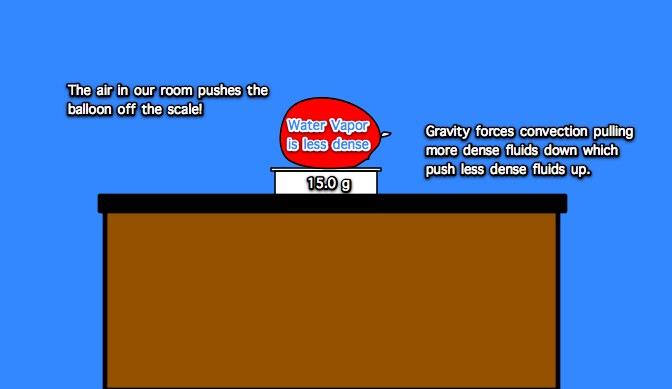
Believe it or not, the mass of the balloon stayed the same!The volume increased, and water evaporated, making the balloon less dense.It was lifted off the scale by the colder, more dense air in the room!This is called buoyancy.9. Predict: What will happen to a helium balloon in a car when you step on the gas?How does this relate to our hot balloon?
List these items and explain what makes them go.
10. What makes it go?
The Fish:
The Helicopter:
The Video Game:
The Flag:
THE ULTIMATE ANSWER!

The Sun!
Revisit your answers and try to explain how the sun makes all of these things go.
In every way, from our thoughts to manufacturing to use, that energy comes from the sun!We are solar-powered!
Rube Goldberg Machine
11. What made this go?
The Sun!!!!!!!!!!!!!!!!!!How?
The food that they ate got its energy from the sun through the process of photosynthesis.
This powers our world in so many ways!
Can you think of something you eat that does not get energy from the sun?
Examples of Convection CurrentsWind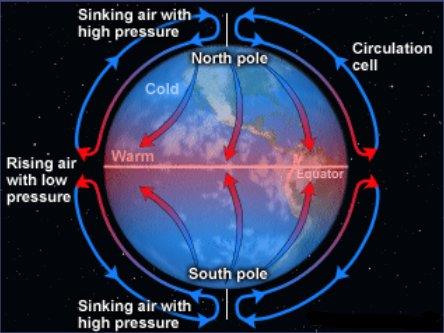
Remember these convection currents?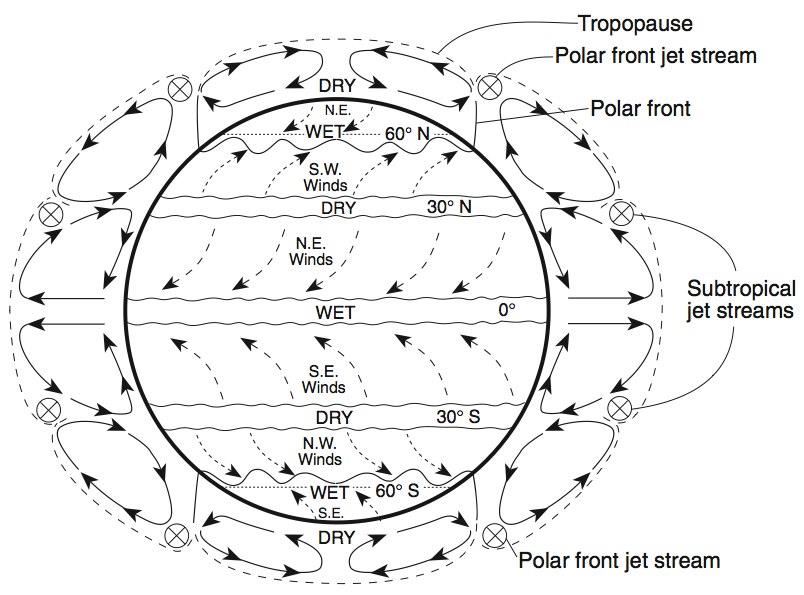 Find this in your reference tables.
Find this in your reference tables.
12. What forces convection currents to move?GRAVITY___________________________________The sun gives them energy, and gravity forces them to move.
Ocean Conveyor Convection Currents13. Explain some important points shown in the video above.
Be sure to watch the entire video!14. How is Global Warming making the North Atlantic cold?Specific Heat
Hint: The front page of your reference tables will help with your answer.If the four boxes below were placed in the hot sun... 15. Which substance would heat up the quickest?
15. Which substance would heat up the quickest?
Copper, because if has the lowest specific heat.16. Which would heat up the slowest?
Water, because it has the highest specific heat.17. Pieces of lead, copper, iron, and granite, each having a mass of 1 kilogram and a temperature of 100°C, were removed from a container of boiling water and allowed to cool under identical conditions. Which piece most likely cooled to room temperature first?
LEAD, because it has the lowest Specific Heat.18. Why do land surfaces heat more rapidly than water surfaces?
because land has a lower Specific Heat than water.19. If 10 joules of heat are added to an equal mass of granite, iron, water, and dry air, which will have the smallest change in temperature? Why?
WATER, because it has the highest Specific Heat of them all.
Water takes the most energy to heat up and the longest time to cool down.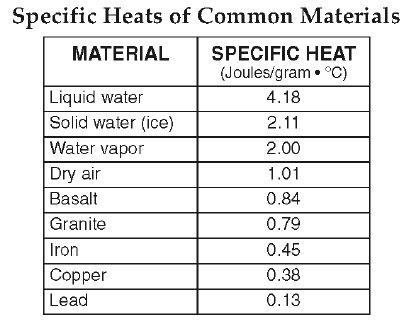
Note: Liquid water has the highest specific heat!Note: The higher a material's Specific Heat, the Slower it heats up or cools down.
Important: The lower the Specific Heat, the quicker the material heats or cools.
20. Does land or sea heat up faster during the daytime? Land heats up faster!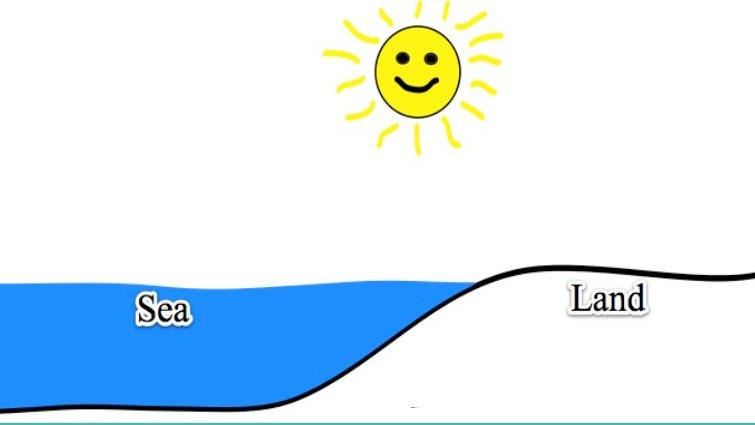 If the land heats faster during the day, draw what will happen to the air over the land and sea.
If the land heats faster during the day, draw what will happen to the air over the land and sea.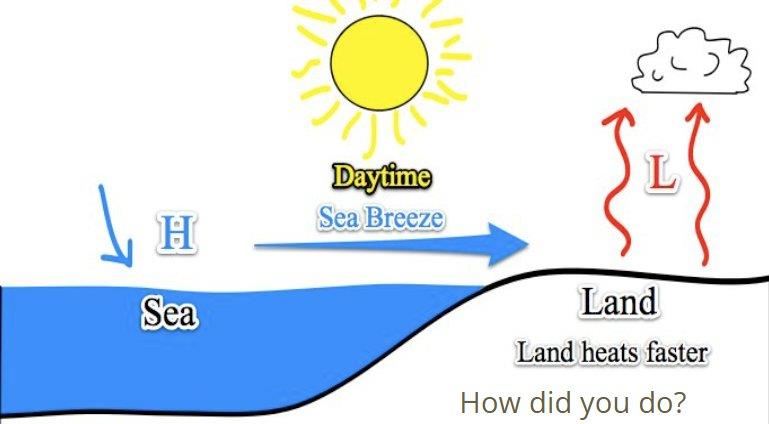 Daytime = Sea breeze
Daytime = Sea breeze21. Since land heats faster during the daytime, what type of pressure system will form over the land? A Low-Pressure System
- Sea breeze comes from the sea
- It happens during the day because land heats faster and hotter air rises.
- That is why we fly a kite at the beach during the day.
- Remember, the wind is described by the direction it comes from.
- Wind blows from high to low pressure.
22. What cools faster, the land or the sea? Land cools down faster!
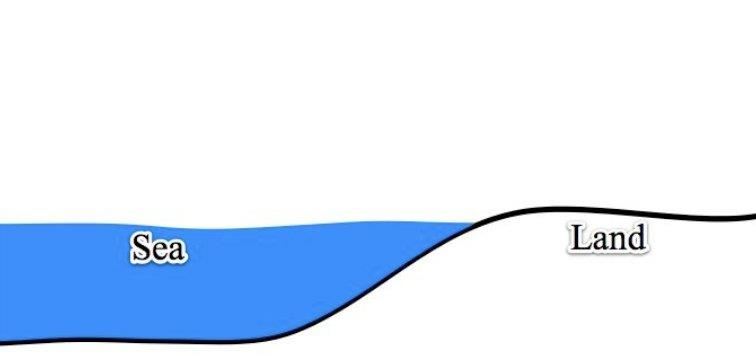
Draw the way the air would move during the evening.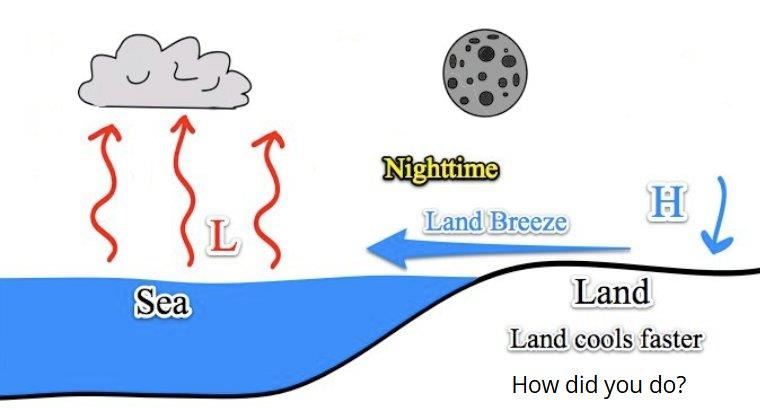
Nighttime = Land breeze- Land breeze comes from the land
- It happens during the night because the land cools faster,
and the warmer, more humid air over the water rises.
Journal Reflections
- Note the three main things that you learned about convection.
- Describe the relationship between Specific Heat and temperature changes.
- Explain the difference between a land and a sea breeze. When do they happen, and why?
BonusTake notes on this short film.
Explain why the earth's average temperature increase of just 1.5 degrees is actually a big deal!
Temperature is a reflection of the average speed of the motion of molecules.
The faster they move, the more friction they create, which we feel as heat.
The faster they move, the further apart they become, which we see as expansion (increase in volume).
Create your own Rube Goldberg Machine with at least 10 actions ending with an educational statement about solar energy.
Be creative!
You will need to video your machine.
-

